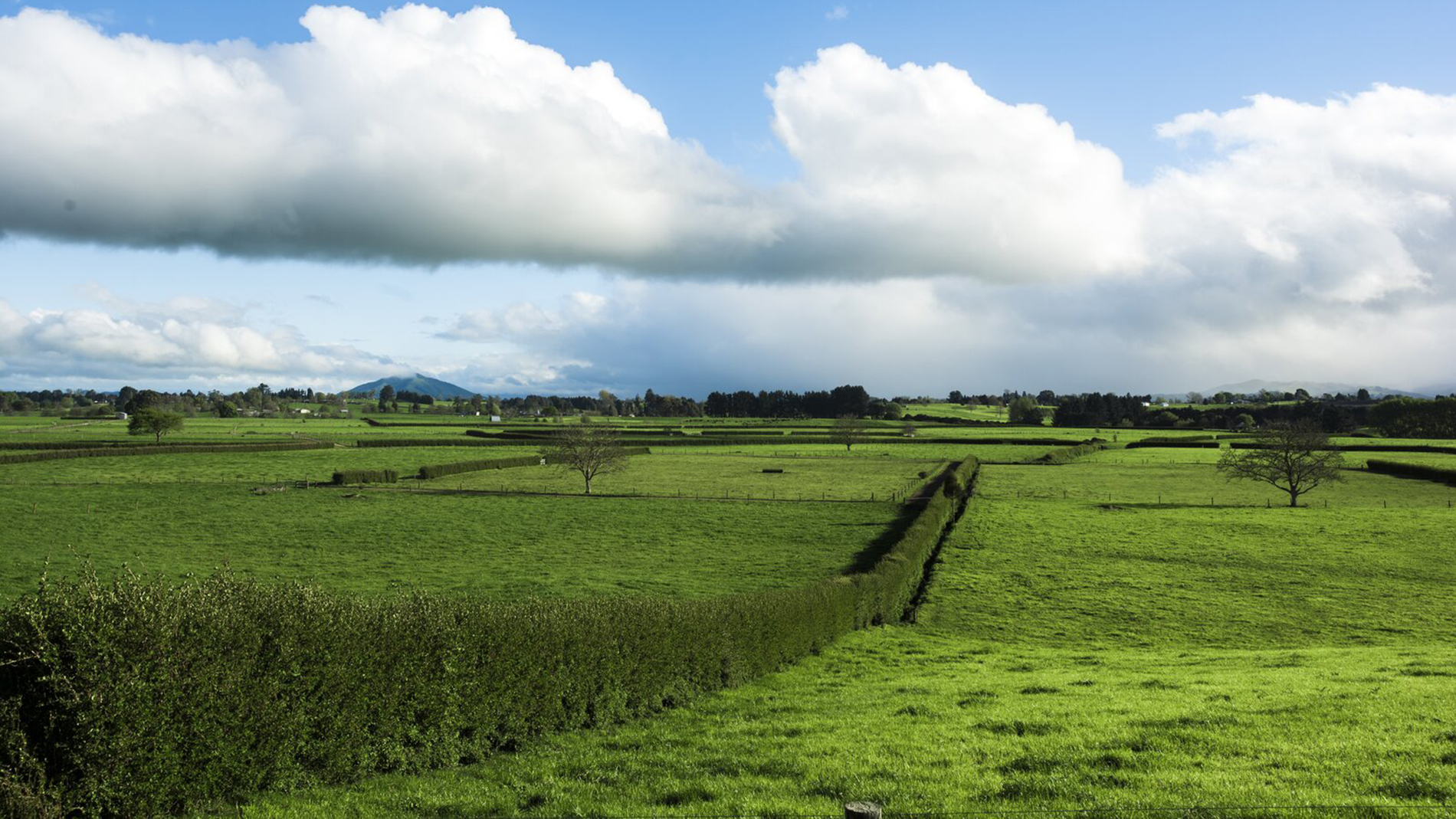Land and soil in the Waikato region
The Waikato region covers 25,000km2 of land. Over the last 150 years people have made massive changes to this land – forests have been cleared and wetlands drained. We haven’t always understood the effects of what we have done or managed these effects well.
Our soil is a non-renewable resource. It takes thousands of years for rocks to weather into soils, and hundreds of years for rich organic matter to build up. Our welfare depends, to a large extent, on our soil and climate. Entire civilisations can rise and fall depending on their soil quality.
This means that making the best use of our land and soils is very important for our well being and survival. To use our land wisely we have to understand soil.
Our land is home to many unique plants and animals. They have developed here over millions of years in isolation. But we have already lost many species and could lose more without careful management.
Our land resource
We have different land types in the Waikato region which suit different uses. We may damage the land by using it in a way not suited to its soil. Good land management practices help us protect our soils.
Only five percent of New Zealand’s soils are good enough to be used for many different purposes (including cropping, horticulture, pasture and forestry). Soils that can be used for many different purposes are said to be highly versatile.
Soil versatility is a measure of what uses a soil is best suited to. Very versatile soils are suited to a wide range of uses – including cultivation and cropping which are very demanding on soil.
Soil versatility considers:
- the potential rooting depth of plants
- how well the soil can withstand traffic (both vehicles and animals)
- the potential loss of nutrients from the soil
- the potential risk of erosion
- the water deficit – whether there is enough water in the soil for plants
- soil drainage.
Unfortunately, sometimes we don’t make the best use of these highly versatile soils. We may put roads or buildings on top of them, making them unavailable for other uses.
Two thirds of our soils need special management to maintain their quality and stability. How we manage the land has become a critical issue.
Major land uses
In the Waikato region, pastoral farming (58 percent) and exotic forestry (12 percent) are the main productive land uses. Check out the Waikato region's main land uses on our regional land use map. Find out more about our monitoring of land use change in the region.
Native forests and wetlands cover 28 percent of the Waikato region. This may sound like a lot, but it’s not when compared with 1840 figures. Since 1840, about three quarters of our native vegetation has been converted to farms and exotic forests.
Effects of land use
We depend on agriculture and forestry for much of our region's wealth. But farming, horticulture and forestry can put pressure on soils.
As long as people are farming land, there will be increased erosion. Repeated cultivation or cropping reduces soil organic matter and microbial activity.
In comparison, while the trees are growing, production forestry may have good effects on land and water. But there can be negative effects during harvesting. This is because harvesting the logs can disturb the soil and increase erosion. The erosion can lead to more sediment in waterways.
How we use the land can affect our water in a number of ways. Find out about how land use affects Lake Taupo.
Good land management practices can reduce our impacts on soils and water. If we want our land use to be sustainable long term, we need to monitor our soils and follow good land management practices.
What can we do to help protect our land and soil?
-
There are many things we can do to improve and maintain soils, such as:
- planting trees on hills and near streams
- careful use of fertilisers and pesticides
- retiring land from unsuitable uses or changing our land uses
- carefully managing stock
- reducing cultivation
- carefully managing water tables
- carefully planning urban growth and subdivision.
We can protect our native plants and animals by:
- legally protecting remaining native vegetation
- fencing to keep stock out of bush remnants
- controlling plant and animal pests.



To ask for help or report a problem, contact us
Tell us how we can improve the information on this page. (optional)